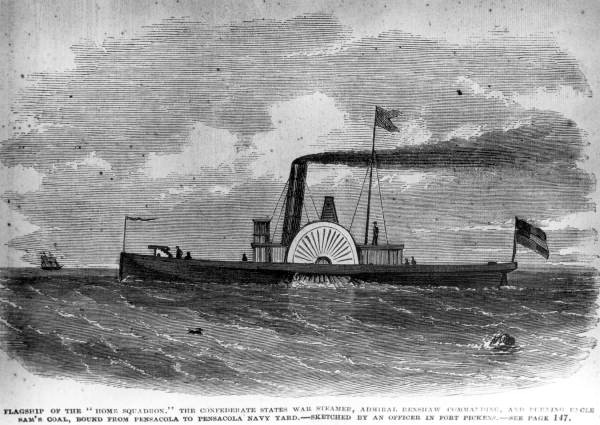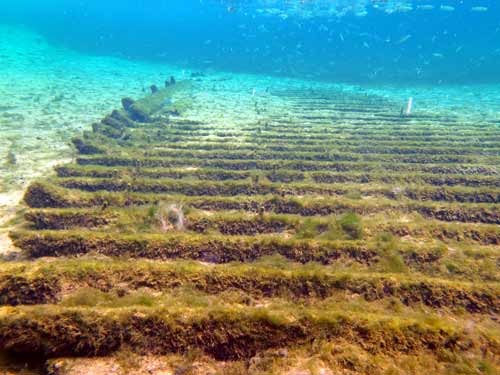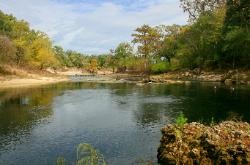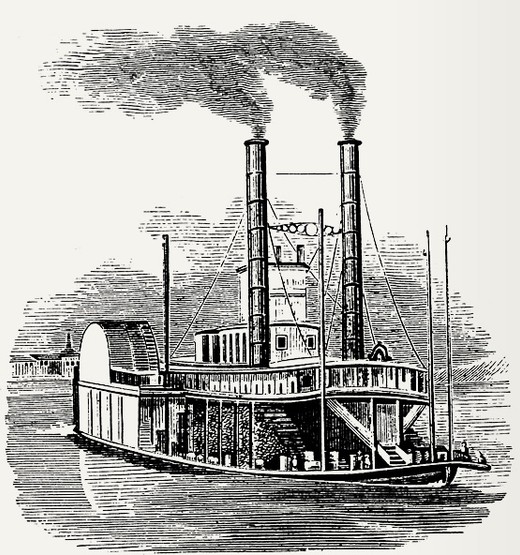The Wreck of the Steamship Madison
Introduction
Text-to-speech Audio
Images
Confederate steamship at Pensacola during the Civil War.

The lower ribs of the steamship, Madison, in Troy Spring Run at Troy Spring State Park.

Troy Spring State Park

Depiction of a river steamboat around the 1850s

Backstory and Context
Text-to-speech Audio
History of the Steamship Madison
The Madison was only one of the many steamboats traversing the Suwannee River in the mid-19th century. As the Suwannee passed by many towns from the Okefenokee Swamp in southern Georgia to the Gulf of Mexico, steamers were critical for the delivery of supplies, mail, and luxury goods to more of the backwoods areas of Florida.
Confederate pension records show that James Felix Tucker was born near Louisville, Kentucky, in 1840, and according to both records and tales, after Tucker’s father’s death, the young boy traveled on steamships down the Mississippi, eventually making his way to Madison County, Florida, in 1852. Historical records also show that Tucker owned the Madison, and that in his teenage years, Tucker obtained a larger-than-life reputation on the Suwannee. He is also credited with opening up river traffic to the popular resort area at White Springs.
At the onset of the Civil War in 1861, the Union Navy imposed a blockade on
Although the Apalachicola River was larger, the Suwannee crossed the railroad lines, increasing the river’s importance for transporting supplies. Steamers like the Madison carried corn and supplies to the river port town of Columbus, where the cargo would be put on trains and sent throughout the Confederacy. Tucker’s service record shows that he joined the Confederate Army in 1862, though legends say that he ran the Madison up the Suwannee until 1863.
In 1863, Confederate Brigadier General Joseph Finegan reported that there were four steamers operating on the Suwannee, and historians speculate that the Madison was one of them. However, by December of that year, fighting was getting much closer to the Suwannee, and the Union Navy clamped down on its blockade of ships on the Suwannee. Vessels increased their patrols, and the Navy captured the steamboat, Little Lilly, at the mouth of the river. Tucker, who wanted to save his steamer, had it scuttled. Likely, the crew nosed the Madison into the spring run at Troy Springs and pulled open its plugs. Tucker may have intended to recover the steamer at the war’s end, but by 1865, scavengers had removed much of the steamer’s internal workings and machinery.
Archeologists have recovered one of the plugs removed from the Madison, and there is little doubt that it was sunk intentionally. Whether the boat is actually the Madison, however, is still a mystery. One piece of evidence is the size of the ship and the size of the ruins, as the wreckage measures about 89 feet long, while the Madison was about 125 feet long. This could be the cause of a missing stern or general erosion.
Archeologists are yet unable to find definitive proof that the wreckage at Troy Springs is the Madison.
